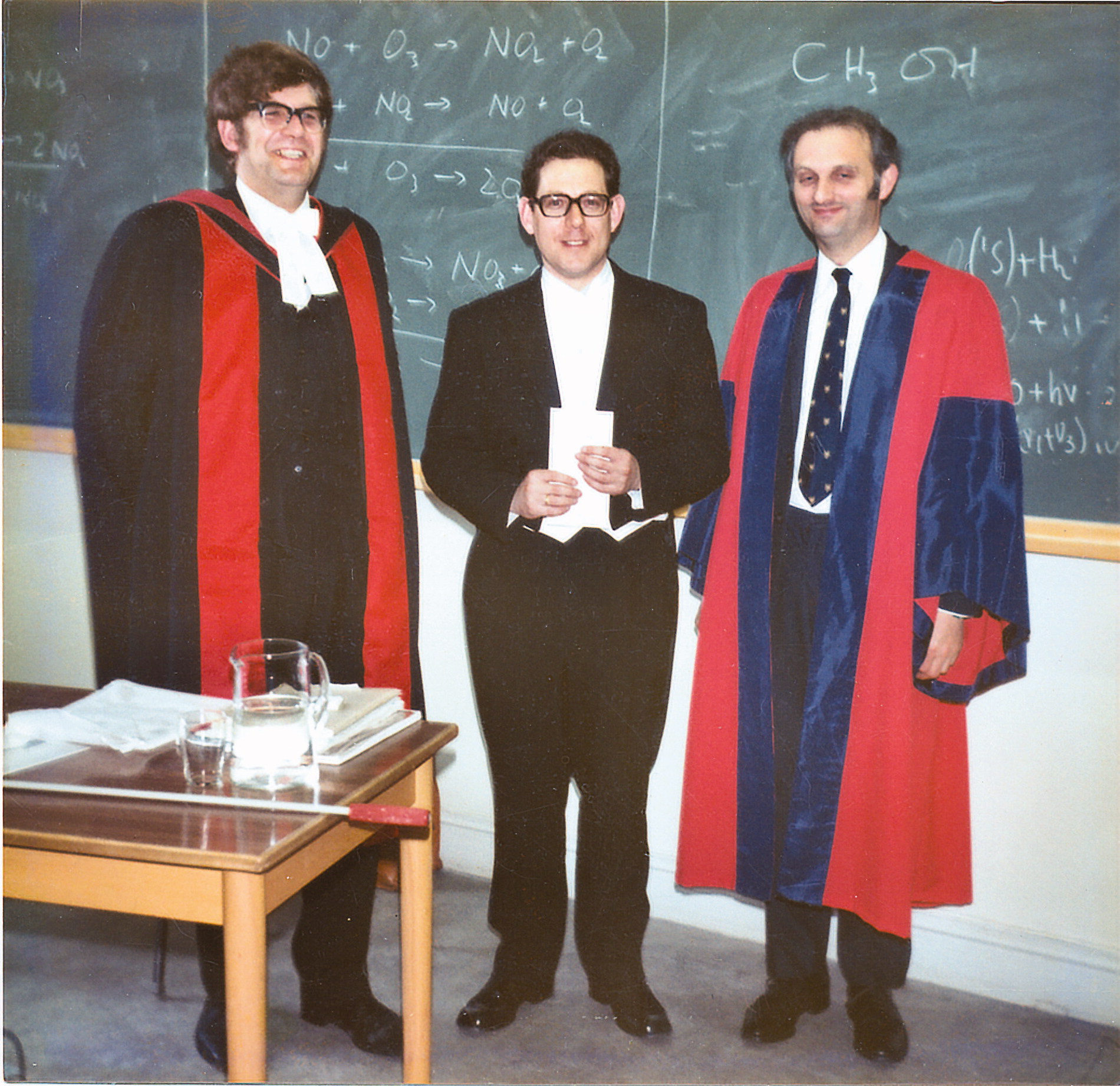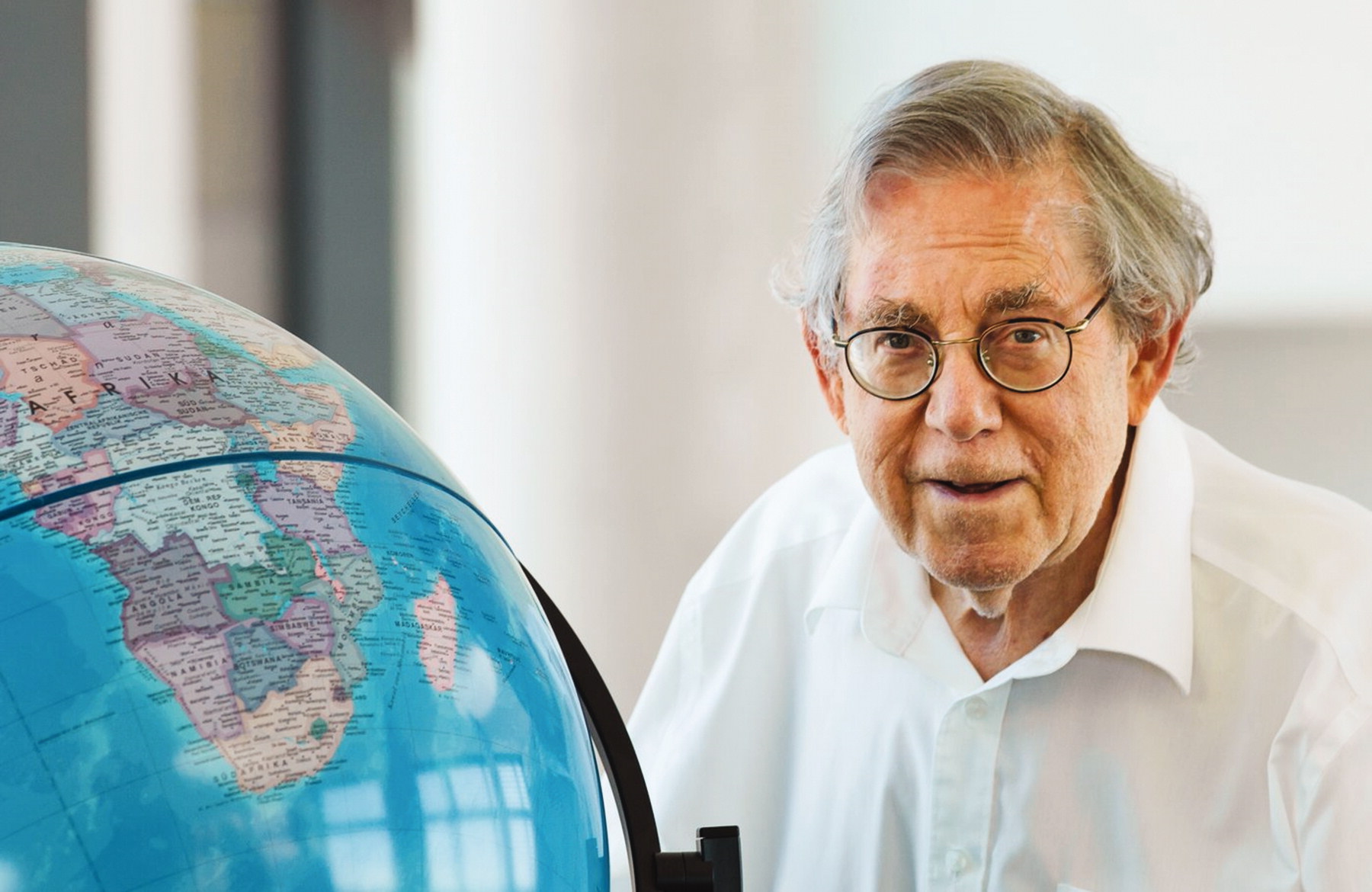As a newcomer in atmospheric chemistry, I had the opportunity to get to know Paul Crutzen during a NATO workshop organized by Karl-Heinz Becker in March 1977 in the Dolomites, where Paul was eager to take an unpolluted air sample at Peak Marmolada. The Weather Service had forecast a lot of fresh snow – excellent conditions for clean background air from the free troposphere. The industrial chlorofluorocarbons CF2Cl2 (F12) and CFCl3 (F11) were already known to be harmful to the stratospheric ozone layer and to occur everywhere in the lower atmosphere, even at 3 km above sea level. Also expected to be involved were the biogenic methane (CH4) and nitrous oxide (laughing gas, N2O) as precursors of tropospheric carbon monoxide (CO), stratospheric water (H2O), hydroxyl radicals (HO•), hydroperoxy radicals (HO2•), nitrogen oxides (NOX = NO, NO2), and nitric acid (HNO3). Paul Crutzen was interested in the distribution and lifetimes of methane and CO, but also of short-lived trace gases such as non-methane hydrocarbons. While our workshop group consisting mostly of not so sporty scientists was getting prepared for downhill skiing back to Arabba, we noticed that Paul Crutzen was taking air samples. One after the other, he took evacuated stainless steel bottles from his backpack, lifted them into the sky, and vented them opening and closing the valves. Unfortunately, right after having packed the last cylinder into his backpack, he took a slope too steep to bring him back safely and so he fell, unable to join our party. Paul Crutzen had broken his leg and had to be rescued by helicopter for transport to hospital. The next day, he gave a fascinating presentation introducing the mathematics of his science to us - using one of his crutches as pointer.
In January 2021, we lost Paul J. Crutzen, the last laureate of the Nobel Prize in Chemistry of 1995 shared with F. Sherwood Rowland (1927–2012) and Mario J. Molina (1943–2020) for their ‘Work in atmospheric chemistry, particularly concerning the formation and decomposition of ozone’, groundbreaking work into the man-made photochemical destruction of ozone and the stratospheric ultraviolet radiation shield. Their initial predictions became true very soon, but a rapid and almost complete loss of the stratospheric ozone layer started occurring over the whole of Antarctica every early spring. It took years to detect and confirm this global problem by balloon soundings and re-evaluation of existing satellite observations. This Chemistry Nobel Prize was the first and up to now the only one devoted to environmental studies.
Grown up in a humble but cosmopolitan family in Amsterdam, Paul Crutzen entered the Hogere Burgerschool, passed the Middelbare Technische School for civil engineering, and initially worked in the Bridge Construction Bureau of the City. On a vacation trip to Switzerland, he met Terttu Soininen, a student of Finnish History and Literature at the University of Helsinki whom he married a few years later. Together they moved to Gävle in Middle Sweden where Paul worked in a house construction bureau to earn the income for their family (growing with two daughters born in 1958 and 1964). All this time, Paul Crutzen had longed for an academic career, so he grasped an offer as computer programmer in 1959 at the Institute of Meteorology of the University of Stockholm, housing the at that time fastest supercomputer for weather prediction. Rapidly he acquired the skills which allowed him to develop one of the first (barotropic) numerical models for weather prediction. He also programmed a model for tropical cyclones and began to study mathematics and statistics for meteorology. In his Nobel lecture ‘My Life with OX, NOX and Other YZOX’s’, he pointed out to have managed his Master Degree in 1963 and PhD in 1968 as a mere theoretician, with mathematical models for the vertical distribution of ozone and relevant trace gases and their reactions.
In 1969, a postdoctoral fellowship of the European Space Agency took him to Oxford. Returning to Stockholm in 1971, he completed his thesis for the Filosofie Doktor (habilitation) in 1973 and continued to improve his model for the vertical stratospheric distribution of ozone (O3) and NOx. Extensive data on stratospheric nitric acid and water and on tropospheric N2O and CH4 published at that time allowed the scientific community to re-investigate the crucial rate constants of OX, HOX•, and NOX•, leading to significant improvements of Crutzen’s model prediction. Avoiding time-consuming laboratory work by studying the literature, he promoted knowledge on the kinetics of elementary photochemical reactions. His habilitation thesis on ‘Photochemistry of Ozone in the Stratosphere and Troposphere and Pollution of the Stratosphere by High-flying Aircraft’ had a strong impact on international aircraft policies regarding supersonic transport (SST’s) of Boeing, Concorde, and Tupolev with their excessive emissions of nitrogen oxides at vulnerable altitudes.

Paul Crutzen after the habilitation colloquium with his examiners Richard Wayne (left, copyright) and John Houghton (right)
In 1974, Paul Crutzen accepted two half-time positions as consultant at the Aeronomy Laboratory of the National Oceanic and Atmospheric Administration (NOAA) and at the Upper Atmosphere Project of the National Center for Atmospheric Research (NCAR) at Boulder, Colorado. There, he continued international collaboration with gifted colleagues, PhD students and postdoctoral fellows in excellent experimental facilities. As Director of Research at NCAR (1977–1980) and from 1980 at the Max Planck Institute for Chemistry at Mainz (until 2000), Paul Crutzen directed laboratory research on stratospheric chemistry and turned his interest to the origin of tropospheric ozone. He developed a model on the vertical, seasonal, and latitudinal distribution of HO• in order to understand long-range transport of biogenic and anthropogenic emissions of trace gases including SO2 and halogenated chemicals, such as pesticides.
The daytime level of the highly reactive HO• radical formed from water and O (1D) is large enough to provide the predominant sink for essentially all trace gases containing hydrogen atoms or an olefinic double bond. This radical purifies the troposphere and prevents biogenic and anthropogenic emissions from damaging the extremely clean stratospheric ozone layer. Examples of biogenic trace gases escaping this perfect cleansing mechanism and polluting the stratosphere are N2O (reacting with O (1D) to form 2 NO molecules), CH4 (delivering H2O upon HO• oxidation), methyl chloride and methyl bromide (releasing atomic Cl and Br by photolysis), and carbonyl sulfide (OCS). These trace gases provide a natural background of radicals for chain reactions degrading atmospheric pollutants and forming sulfuric acid aerosol (the stratospheric Junge layer). But as the former have increased since the beginning of industrialization and agriculture, they also tend to lower the natural level of ozone in the stratosphere. A three-dimensional model of tropospheric and stratospheric chemistry allowed Paul Crutzen to calculate global and hemispheric budgets of ozone, methane, carbon monoxide, dimethyl sulfide, NOX, and N2O in order to distinguish natural and anthropogenic sources from land and oceans, of biomass burning, lightning, and fertilizers. From Boulder and Mainz and while teaching at universities at Fort Collins, Chicago, San Diego, and Utrecht, he initiated studies on freezing and heterogeneous chemistry awarded with the German Environment Prize together with Frank Arnold. Stratospheric ice clouds containing water, sulfuric and nitric acid caused the striking ozone hole over Antarctica and, in less extent but wider area, over the Arctic by the sudden photochemical release of radicals from such cold clouds upon warming during the spring sunrise.
Mentors who taught and inspired him and whom he mentioned (starting with an anonymous teacher from primary school) in his Nobel Lecture were: Georg Witt, Bert Bolin, Hilding Sundquist, Svante Oden, Erik Eriksson, Henning Rodhe, Richard Wayne, John Houghton, David Murcray, Harold Johnston, Sidney Benson, Marcel Nicolet, Hiram Levy III, Bill Chameides, Jim Walker, Veerabhadran Ramanathan, Eldon Ferguson, Dieter Ehhalt, Dieter Kley, John Birks, Frank Arnold, and James Lovelock. As an engineer and theoretician, Paul Crutzen suggested and initiated experimental work in various fields to look for missing information, homogeneous and heterogeneous chemical reactions, rate constants, physical and biological processes, and he raised public awareness of human impact on climate, albedo, natural global processes, the role of atmospheric trace constituents and their transformation products.
The three stainless steel containers of 1977 were returned from the alpine Marmolada to Mainz by Geert Moortgat, who when crossing the border into Switzerland refused (successfully) to open them for the Swiss border officers. Personally, since 1983, I have enjoyed the respect and interest of Paul Crutzen in conversations about our aerosol smog chamber work at Hannover and Bayreuth on the halogen activation from sea-salt in the presence of ozone and light, and on ClNO2 and BrNO2. These he soon began to model for the troposphere, combining our observations with those of others.
Paul Crutzen published more than 350 original articles and 15 books and gave many brilliant contributions at conferences and workshops. He was among the most quoted geo-environmental scientists worldwide, a warner, a thinker, and a staunch mediator between science and society. In Germany, he served the ‘Enquete Commission of the Bundestag for the Protection of the Earth's Atmosphere’ as a member from 1987 to 1990. During the Cold War, upon the request of the Royal Swedish Academy of Sciences, Paul Crutzen modelled the effects of a nuclear war and found that fires would release so much soot that the atmosphere could become dark and cold (so-called nuclear winter). He warned that catastrophic crop failures would exceed direct war damages world-wide and influenced politics in favor of nuclear disarmament.
The stratospheric ozone layer is not only a shield against harmful UV radiation but provides a barrier against vertical mixing and controls the greenhouse effect. Understanding ozone-hole chemistry created the precondition of the Montreal Protocol (1987) in which most countries committed themselves to a drastic reduction of emissions of ozone-depleting substances.
Paul Crutzen proposed the term 'Anthropocene' for our age, in which changes and deep incisions occur in atmospheric, biological, and geological processes and the Earth’s climate. He directed the scientific and social discourse towards an ecological reorientation of economy. Numerous scientific honors were awarded to Paul Crutzen, among them 22 honorary doctorates. He received the Order of Merit of the Federal Republic of Germany and the Knighthood of the Dutch Queen. The asteroid ‘9679 Crutzen’ was named in his honor. In 2011, the German Chemical Society adopted his name for the Young Scientists Award of its section on Environmental Chemistry and Ecotoxicology.
 Photo taken by C. Costard for MPIC.
Photo taken by C. Costard for MPIC.
His coworkers describe Paul Crutzen as warm-hearted, humorous, humble, and unpretentious. He preferred a rather quiet performance, even on a big stage. In Mainz, he walked to the Institute every day. Outside of science, he was an enthusiastic soccer fan. He switched between four languages as if they were his mother tongues and treated everyone with equal kindness and respect. Working with him was inspiring, and he was always full of ideas. Driven by the goal of understanding the Earth system and limiting harmful human influence, he shaped our field of research. Many who were lucky enough to work with him learned how science can serve society. Several of his invited lectures over the past decade ended with a photo of himself and one of his grandchildren, to call on the audience to preserve our planet for future generations.
After his retirement, for almost another 20 years, Paul Crutzen regularly participated in the seminars of the institute, giving advice to younger colleagues and coworkers. Although struggling with Parkinson’s disease, he continued to influence international environmental policies, demanding mindful management of agriculture, to minimize emissions of N2O and other greenhouse gases for the sake of the Earth’s ozone shield and climate.
Acknowledgment
For the CV of Paul Crutzen, I mainly followed his Nobel Lecture and the obituary by G.K. Moortgat, J. Burrows, and G. Lammel for the Section on Environmental Chemistry and Ecotoxicology of the German Chemical Society. I wish to thank Geert Moortgat and Hartmut Frank for advice and editing this manuscript.
